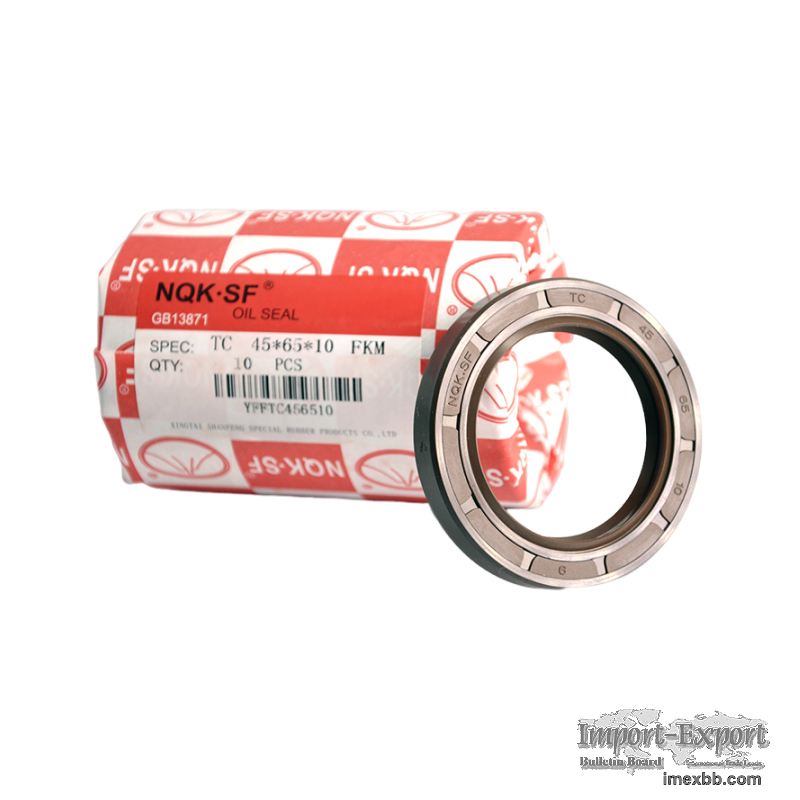 |
 |
Home > Offers to Sell > Others & Excess Inventory > Others
| Contact: | junyingliu |
|---|---|
| Company: | Xingtai Shanfeng special rubber products Co., Ltd |
| Hetou Industrial Zone, Renze District, Xingtai City, Hebei Province | |
| Xingtai City, Hebei | |
| China | |
| Phone: | 18713908608 |
| E-Mail: | |
| Date/Time: | 6/12/24 2:51 GMT |
High Quality Oil Seal NBR FKM ACM Material Wear Resistant Framework Oil Sea
In the realm of mechanical engineering and maintenance, oil seals play an
indispensable role. Ensuring these components function effectively requires a
deep understanding of several major factors that affect oil sealing
performance. By examining these elements, we can enhance seal reliability,
extend machinery life, and prevent costly downtimes.
1. Material composition is a fundamental factor influencing oil sealing
performance. Oil seals are made from a variety of materials, each suited to
different operational environments. Fluoroelastomer (FKM) and nitrile rubber
(NBR) are two common materials. FKM is preferred for high-temperature and
chemically aggressive environments due to its robust resistance properties. In
contrast, NBR is chosen for its cost-effectiveness and good performance in oil
and fuel applications, although it is less durable in extreme temperatures.
2. The design and geometry of oil seals are crucial for their
functionality. The lip design, which can be single or double, significantly
affects the seal's ability to prevent leaks. Double lip designs provide an
extra layer of protection against contaminants, which is particularly
beneficial in harsh environments. Additionally, the seal's edge shape must be
carefully designed to maintain optimal contact with the shaft, ensuring
consistent performance even under dynamic conditions.
3. The condition and preparation of the shaft surface where the seal is
applied are paramount. A finely finished shaft surface minimizes friction and
wear on the seal, enhancing its durability. A rough or uneven shaft surface,
however, can lead to rapid wear and potential seal failure. The hardness of the
shaft also matters; a harder shaft surface can withstand more wear and reduce
the likelihood of seal degradation over time.
4. Operating conditions such as temperature, pressure, and exposure to
contaminants are significant determinants of oil sealing performance. High
operating temperatures can cause some seal materials to degrade, harden, or
lose flexibility, leading to leaks. Conversely, low temperatures might make the
material brittle and prone to cracking. Varying pressure levels can strain the
seal, potentially causing deformation and failure. Contaminants like dust,
dirt, and chemicals can also degrade seal materials, further affecting
performance.
5. Proper installation techniques are essential for ensuring optimal oil
sealing performance. Incorrect installation can lead to misalignment and uneven
pressure on the seal, causing premature wear and failure. Using the correct
installation tools and methods, ensuring alignment, and avoiding damage during
installation are critical for maintaining seal integrity.
6. Regular maintenance and inspection routines are vital for monitoring oil
seal conditions and ensuring long-term performance. Routine checks for wear,
damage, and leaks allow for timely intervention before significant failures
occur. Proper lubrication practices can also reduce friction and wear,
prolonging the seal's lifespan.
Understanding the major factors affecting oil sealing performance is
crucial for maintaining the efficiency and longevity of mechanical systems.
Material selection, design considerations, shaft condition, operating
environment, installation practices, and regular maintenance are all key
elements that influence how well an oil seal performs. By addressing these
factors, industries can achieve better reliability and efficiency in their
machinery operations.
Minimum Order: 500 pieces
SOURCE: Import-Export Bulletin Board (https://www.imexbb.com/)
Similar Products:Not exactly what you are looking for? Post an Offer to Buy!
![]()
© 1996-2010 IMEXBB.com. All rights reserved.
|
|
|





